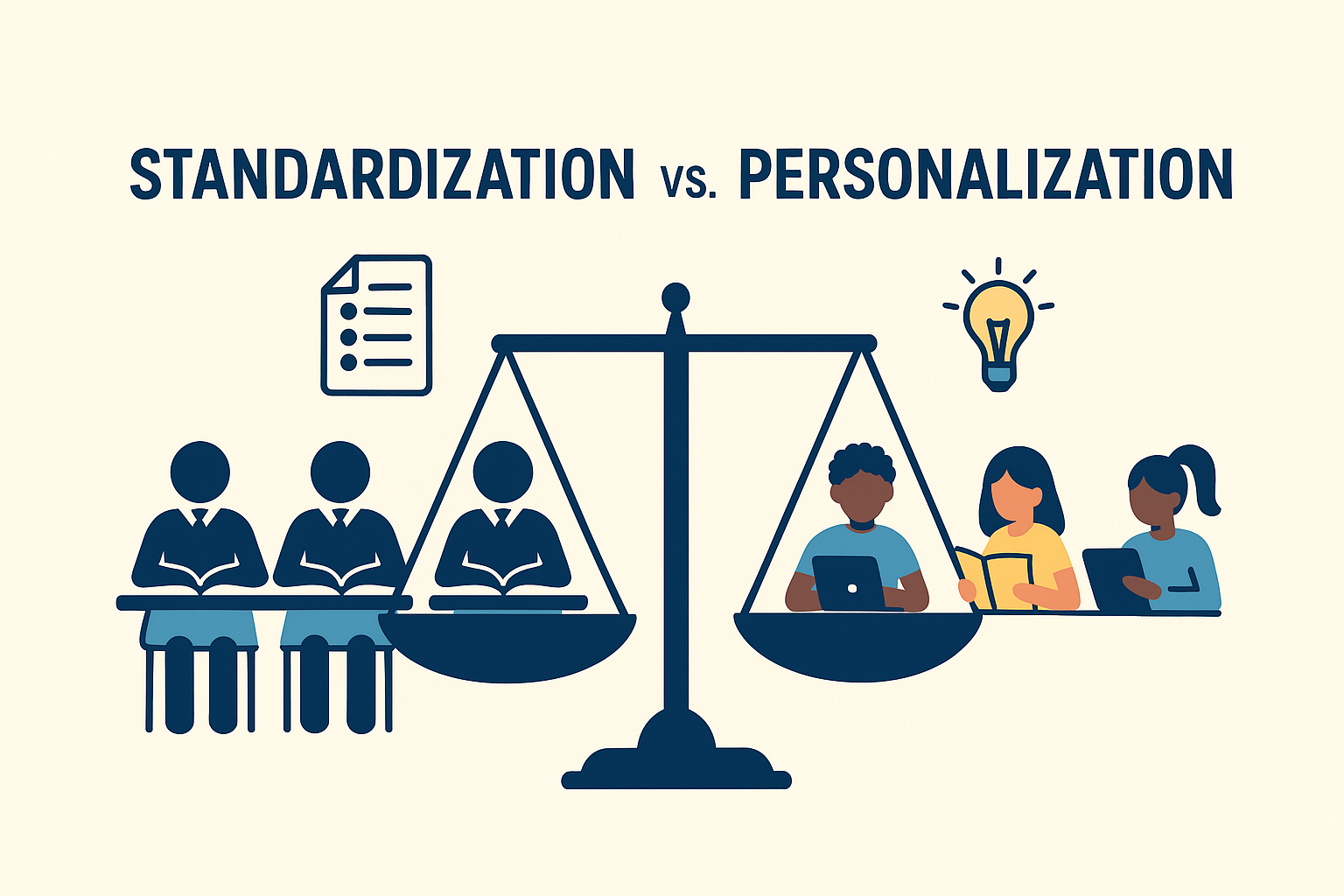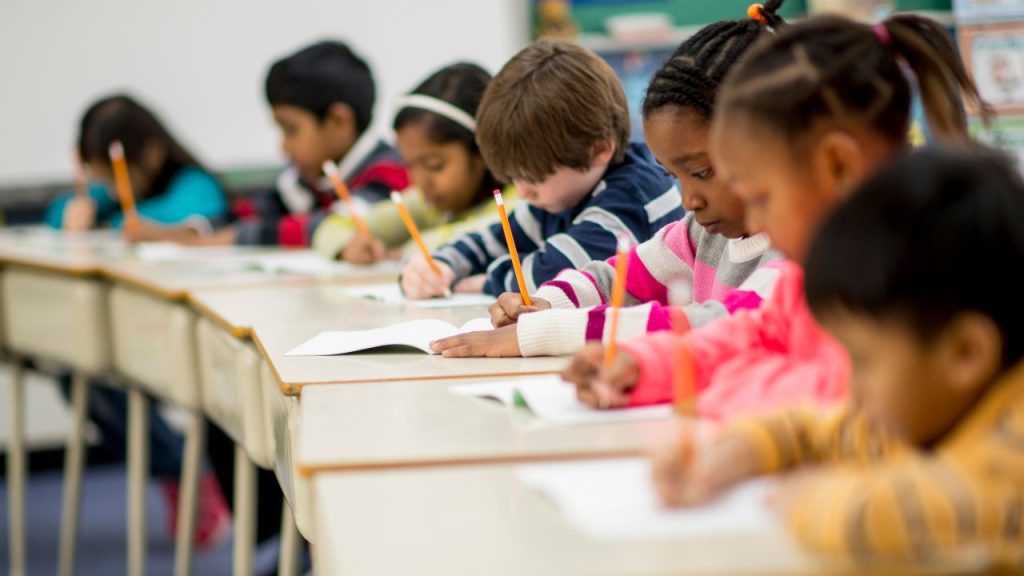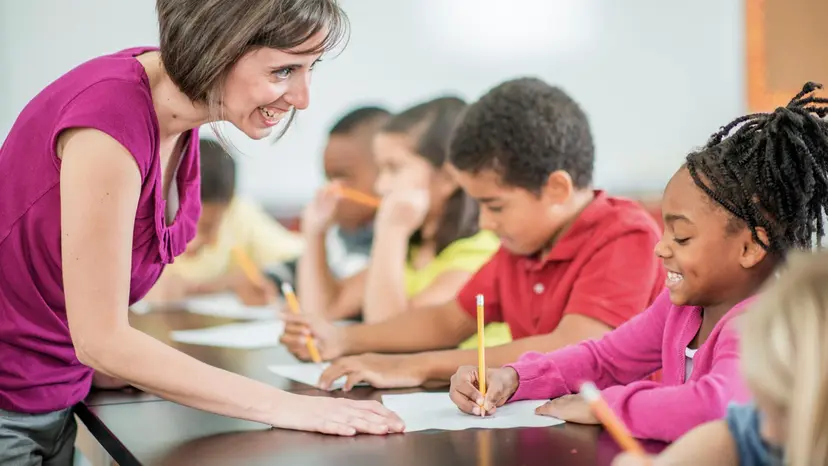Personalization vs. Standardization: Striking the Right Balance in Education

Education faces a very clear question. Should we teach every student the same way or tailor learning for each child? Personalization means lessons fit a student’s needs and also their interests. Standardization can give everyone the same lessons and tests. Both of them offer real value.
This recent study emphasizes that standardization and personalization are not in conflict but are actually complementary, offering consistency while enabling individualized instruction.
Schools need both to help kids do well. The real work is finding the right mix. Us
ed together, these methods make learning fair and steady, and also help each child grow at their own pace.
Two Approaches
What is Standardization in Education?
Standardization gives all students the same lessons, methods, and tests. It keeps the quality of teaching similar across the schools. Teachers also follow clear plans with some set goals. Students can also take the same test, and so results can be compared fairly. This approach helps all. No student is left behind because of where they live or study.
What is Personalization in Education?
Personalization, on the other hand, adjusts learning to match each student’s needs and likes. It aims to make school engaging and also to spark creative thought. According to the situation, the Teachers may let some kids move faster or maybe slower. Students can also choose topics that interest them. Activities can shift to match how each child learns best. The gains in this approach include stronger motivation and a deeper understanding.
The Case for Standardization

1. Benefits
Standardization gives equal access to the same content for all kids. Everyone gets a fair shot in this system, regardless of their income level and whether they live in small towns or cities. Schools can also measure progress clearly to see if students learn what they should. Teachers can also know exactly what to cover. Students can earn diplomas and test scores that colleges and employers accept across many places. And this helps kids get ready for life after school in a connected age.
2. Limitations
One approach won’t fit every student. Some get bored when lessons move too slowly. Others feel lost when classes move too fast. The same style year after year can also drain interest. Also, equal access does not always lead to equal results because kids from different backgrounds may need different support to succeed with standard lessons.
The Case for Personalization

1. Benefits
Kids learn in different ways. Some learn by seeing, others by hearing, and some by doing. Personalization can also make room for those differences. Choice brings energy because kids engage more when they can pick what to study.
Matsh reports that students in personalized learning programs score about 30% higher on standardized tests, exhibit 75% motivation versus just 30% in traditional classrooms, and schools report increased attendance and lower dropout rates, showcasing the real impact of tailored instruction.
Students with special needs or advanced skills get what they truly need. Teachers learn more about each child and can spot problems early. It also builds independence and strong thinking skills that standard tests do not show.
2. Limitations
Creating varied lessons can take considerable teacher time and effort. Schools may also need more tech, books, and training materials. Grading can also get harder when projects differ. Big classes make one-on-one help tough. Many schools lack funds for special tools or programs. Some teachers have not yet learned how to personalize Welt.
Strategies for Striking the Right Balance
Hybrid Curriculums
Schools can teach core areas like math and reading with standard methods. And they can add projects or electives based on student interests. A student may follow regular math, then use it for a project on sports stats or game design.
Using Technology
Learning tools can track progress and adjust lessons on the fly. These tools keep to shared goals but change how they present ideas. Kids who need practice get more examples. Those ready to stretch move ahead faster.
Teacher Training and Support
Teachers need guidance to blend both paths. Strong training shows how to meet shared goals with varied teaching styles. Schools should also give planning time for building mixed lessons.
Flexible Assessment Models
Students can take common tests to check basic skills. And they can show deeper learning with projects, portfolios, or talks. This mix measures shared skills and personal strengths.
Policy and Resource Allocation
Leaders must make sure personalization helps every student. That means sending extra resources to schools with greater needs. All schools should have equal access to tech and training.
Examples of Balanced Models
Finland uses a national plan for what kids should learn. But teachers choose how to teach those topics. There are a few large tests, yet students there rank among the top across many countries.
Montessori classrooms set clear steps for math, reading, and science. But kids choose daily activities and move at their own pace.
The International Baccalaureate program sets high standards across subjects. It also asks students to explore their questions through research and service.

